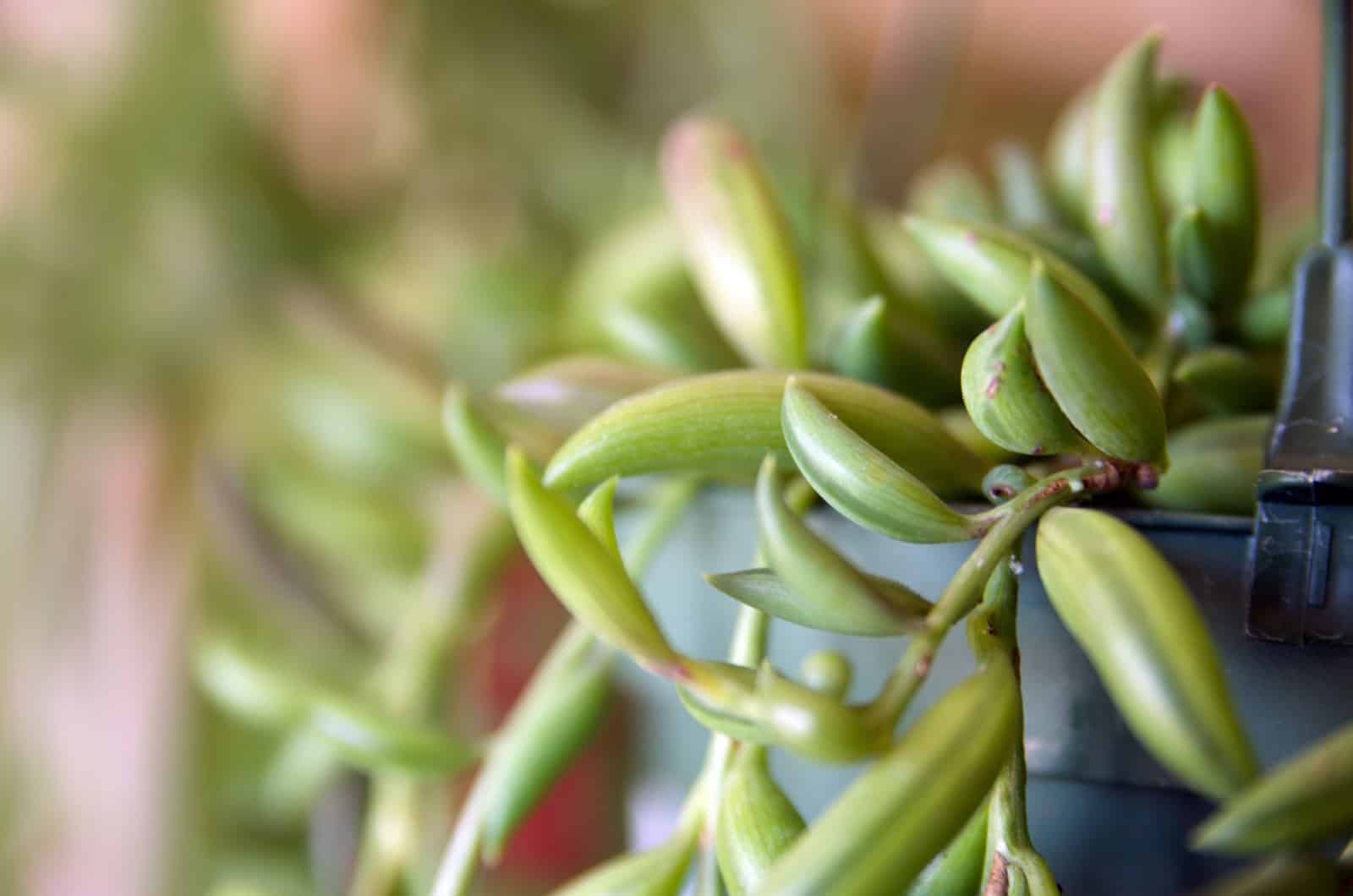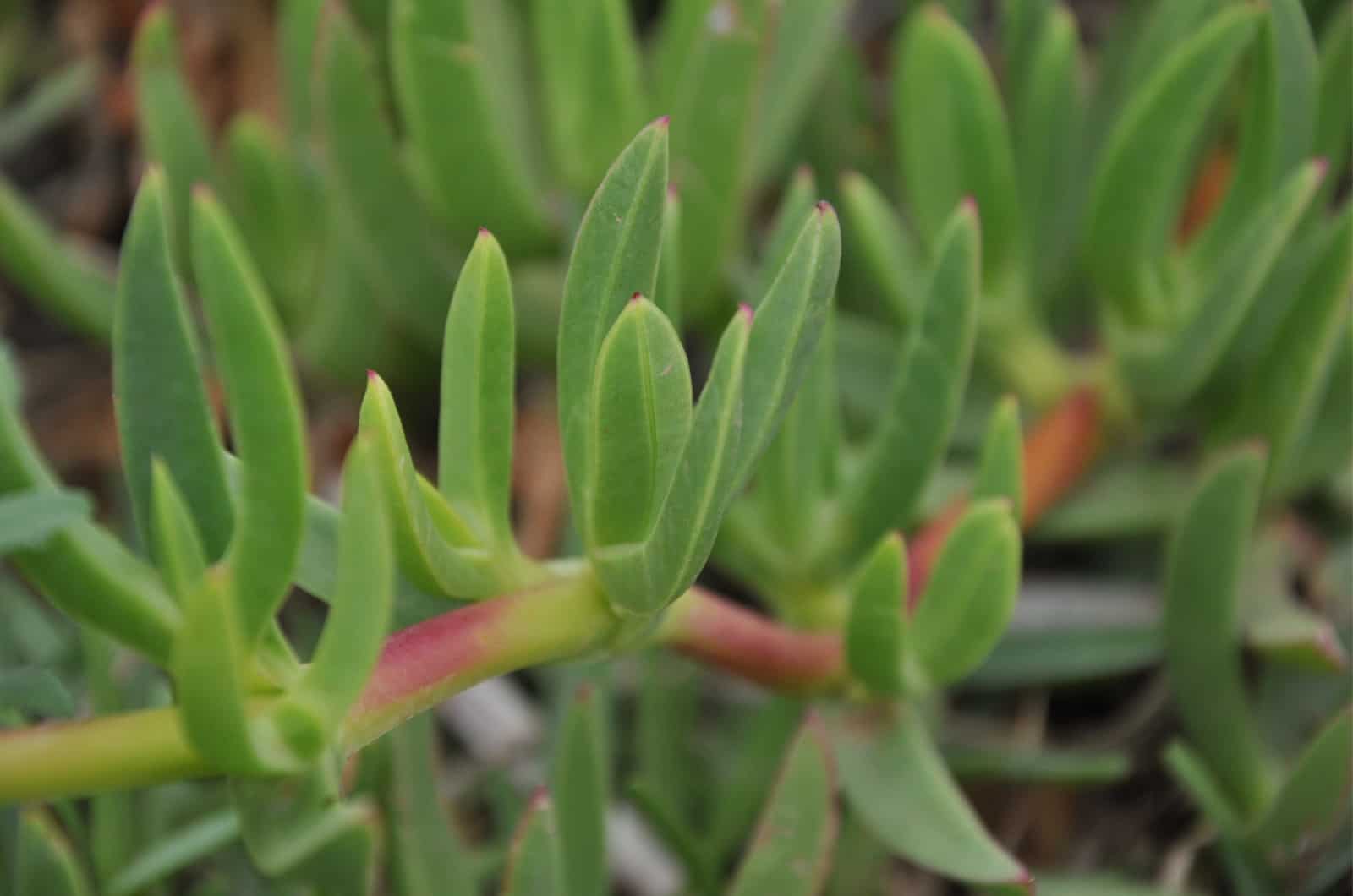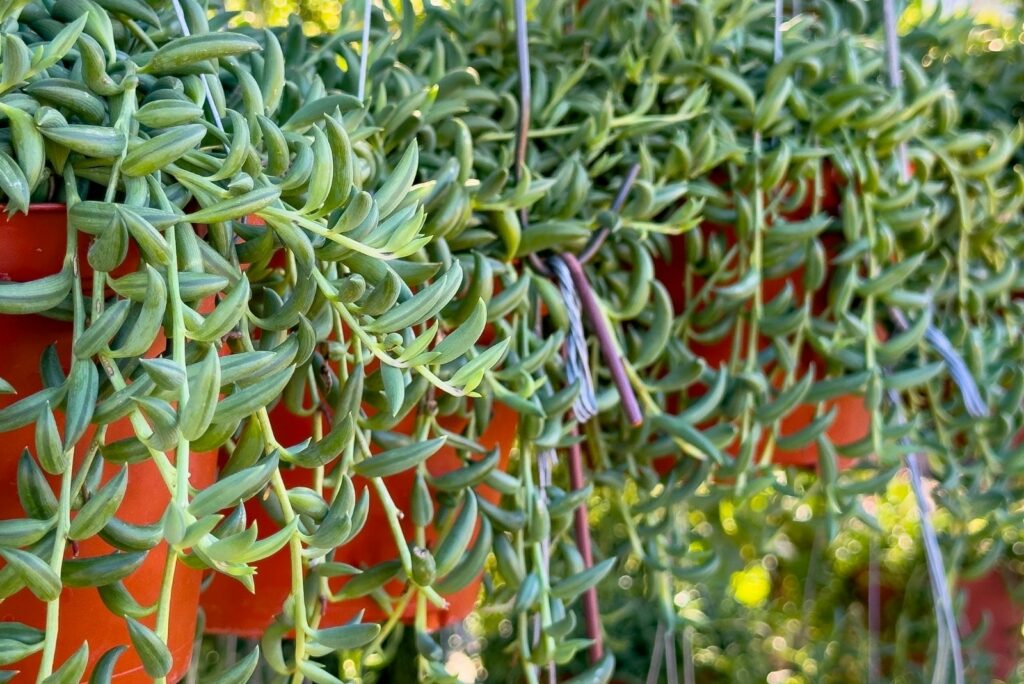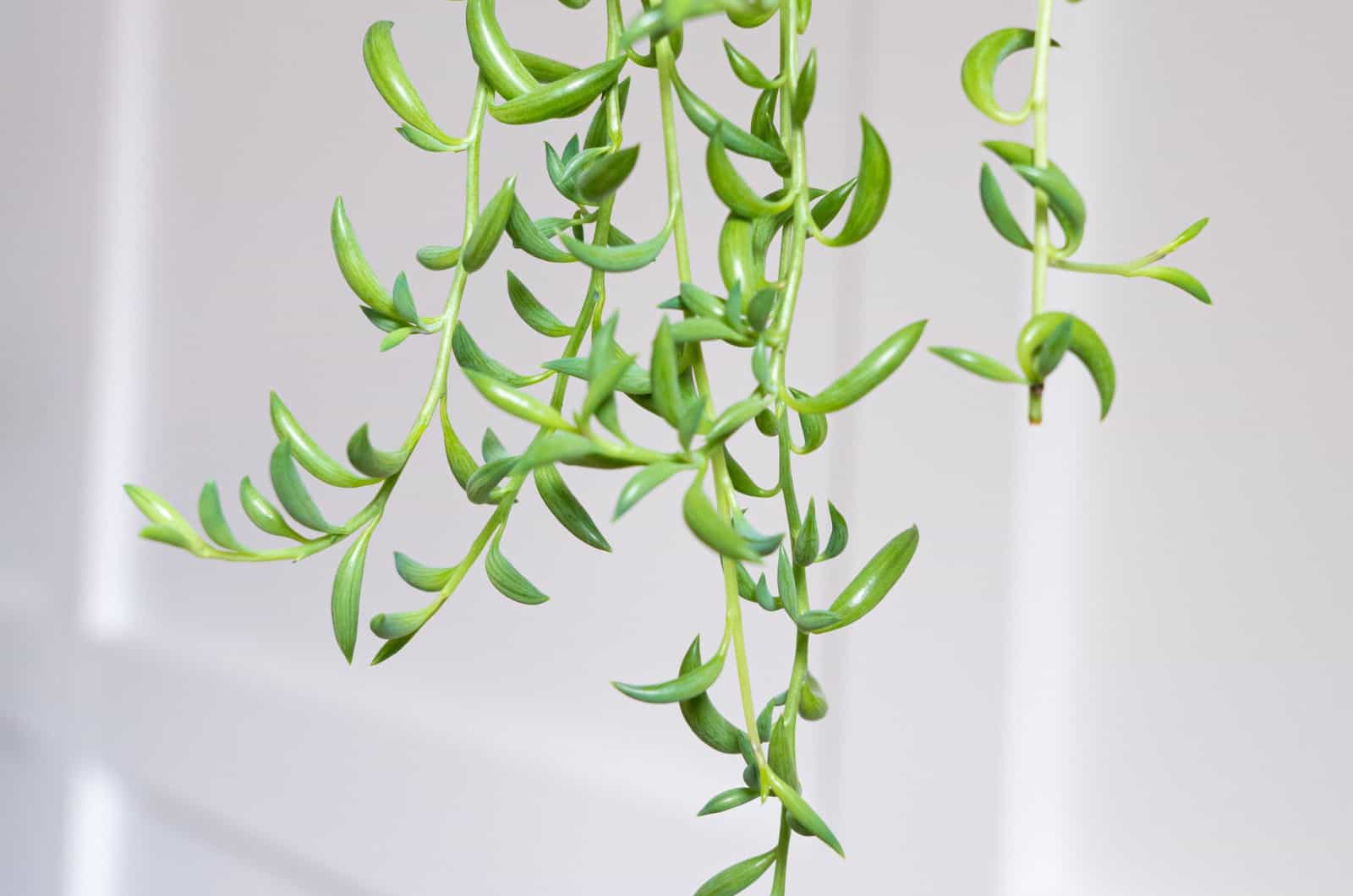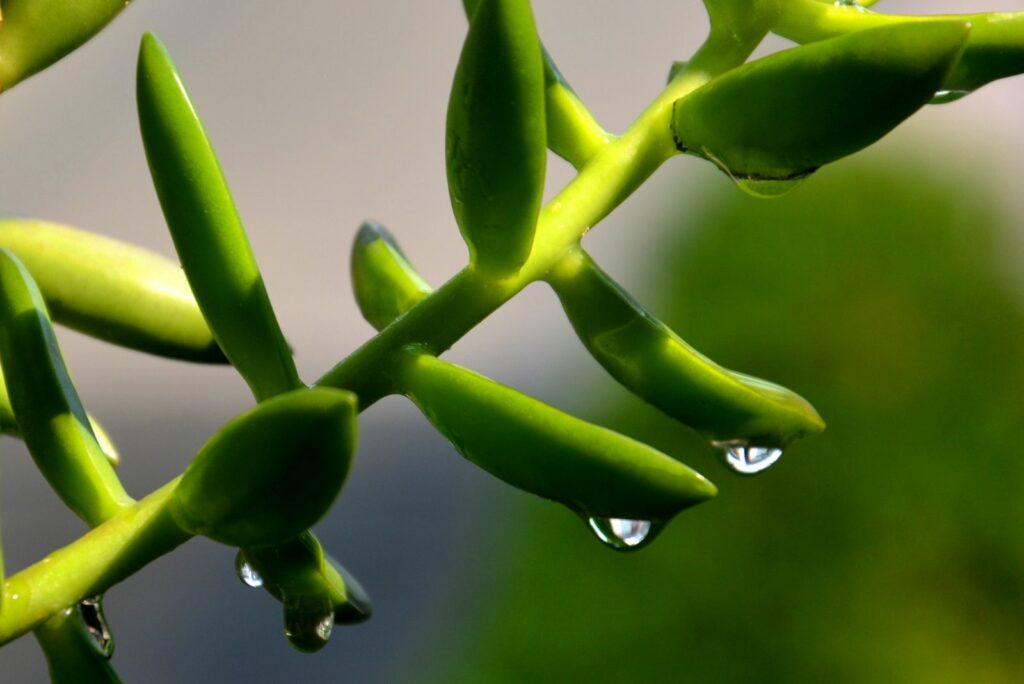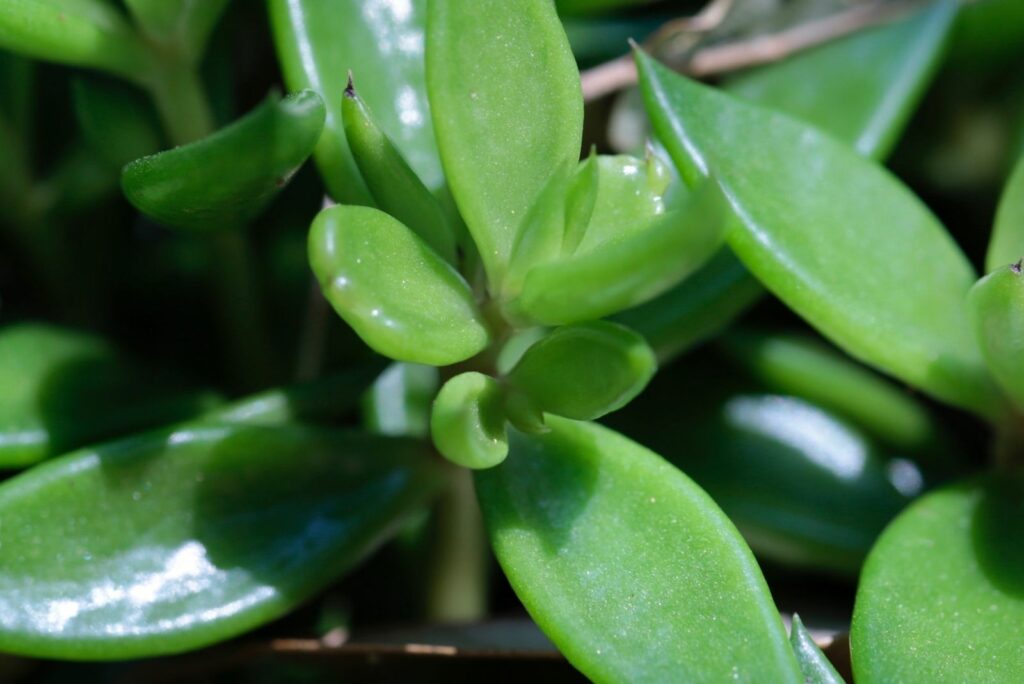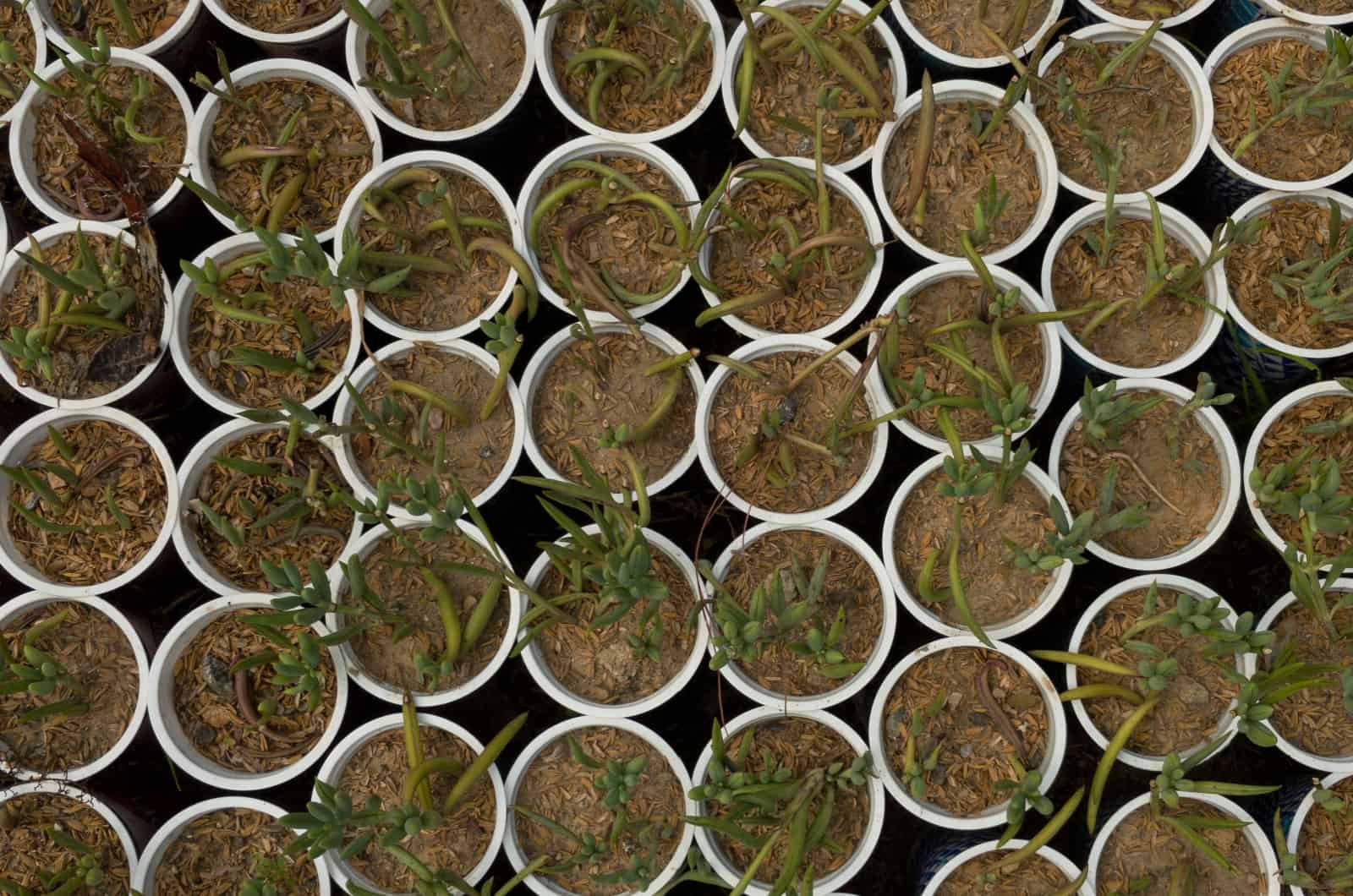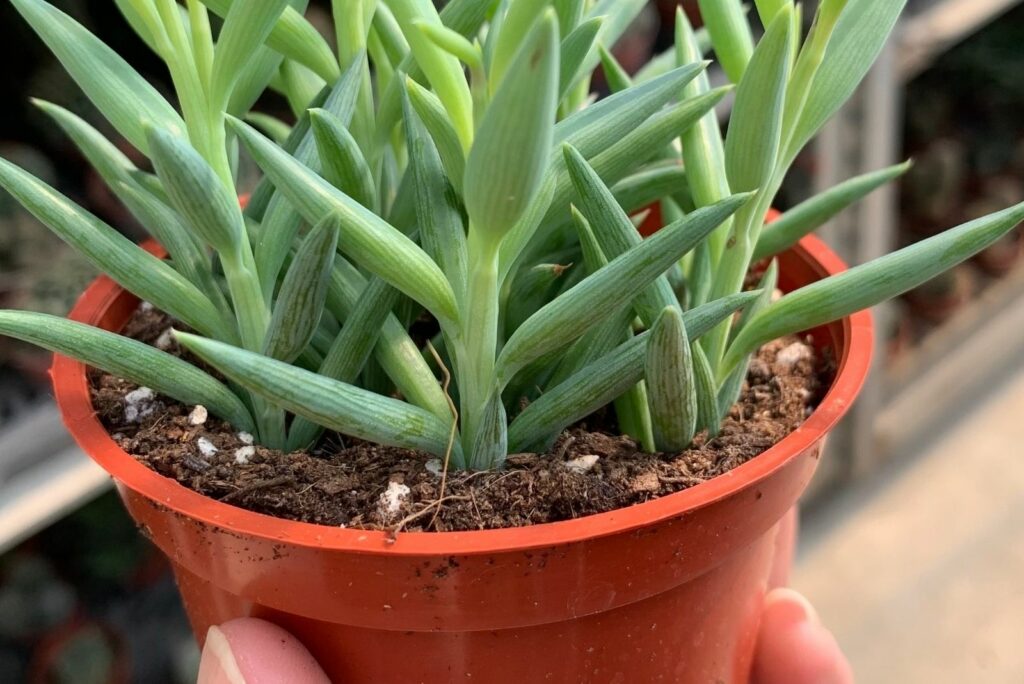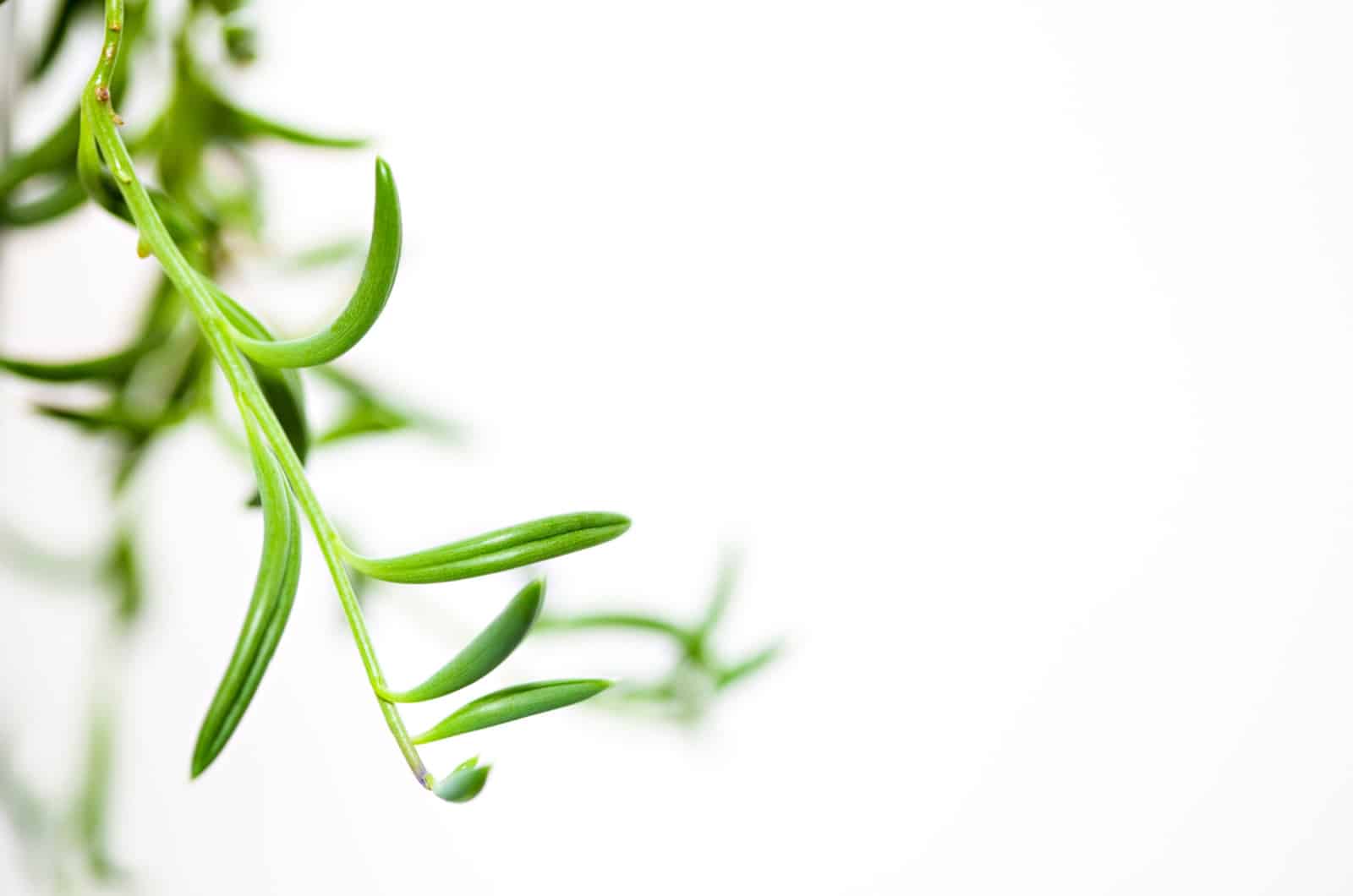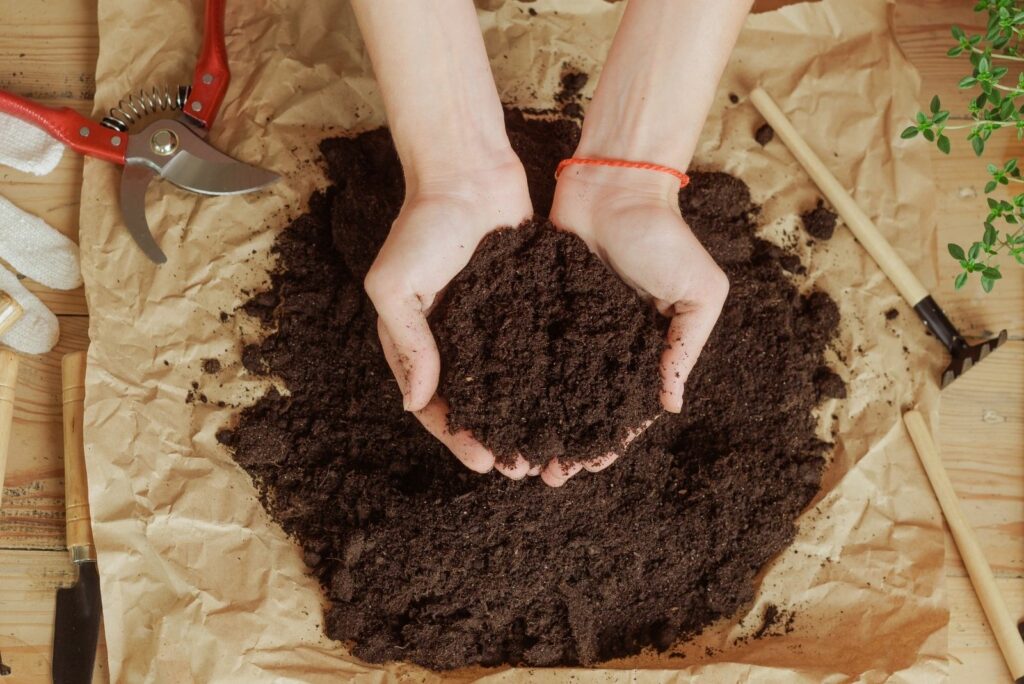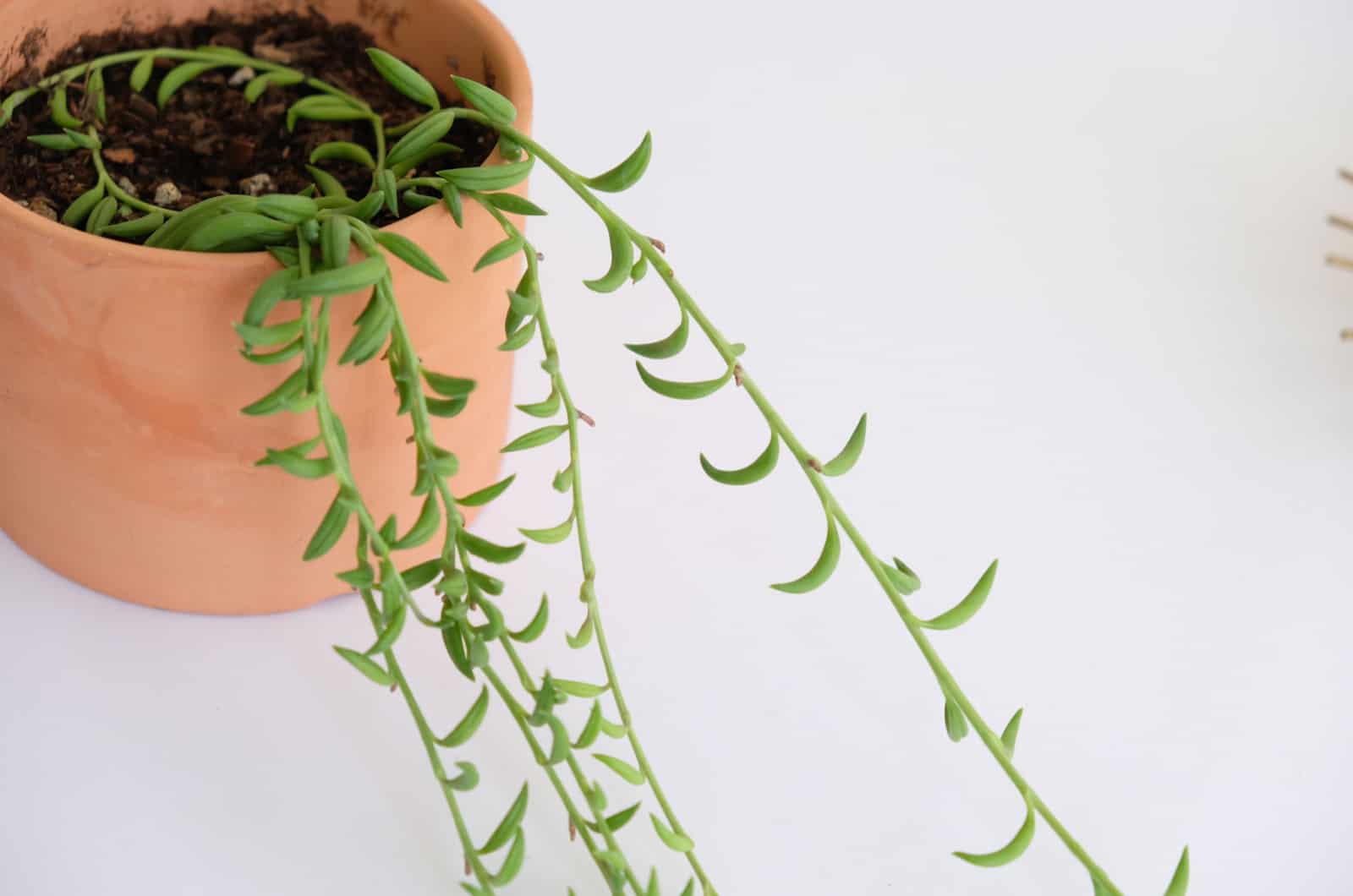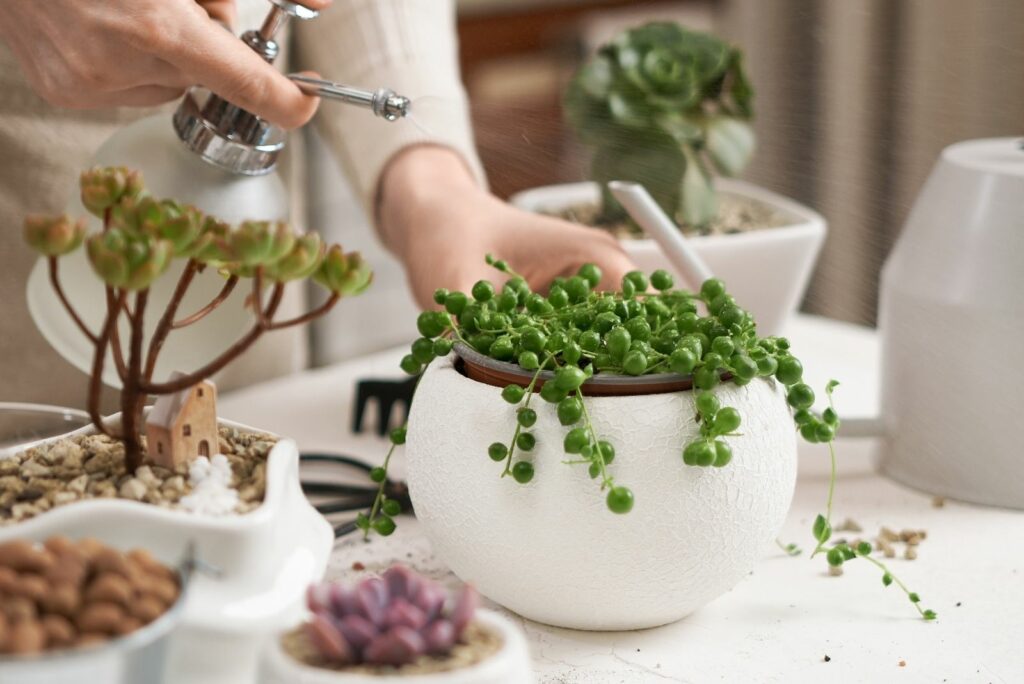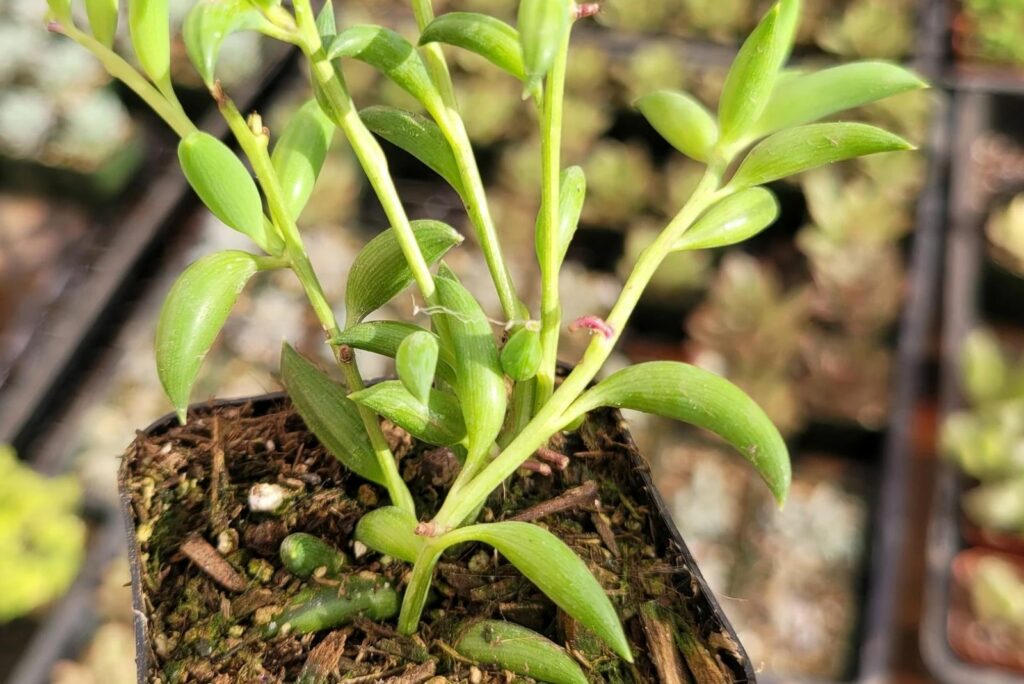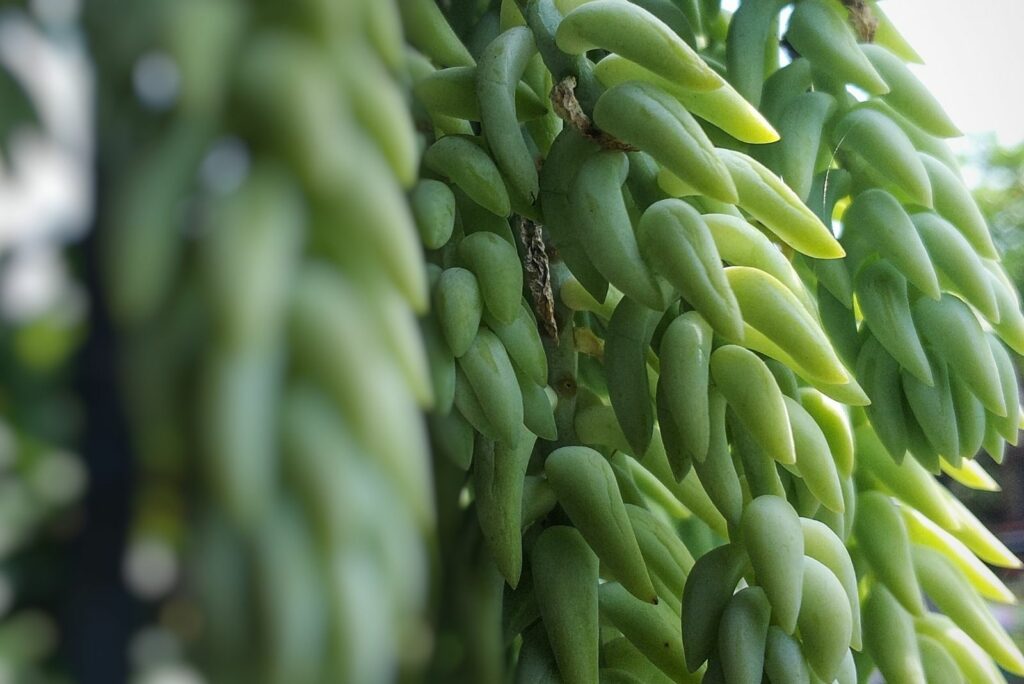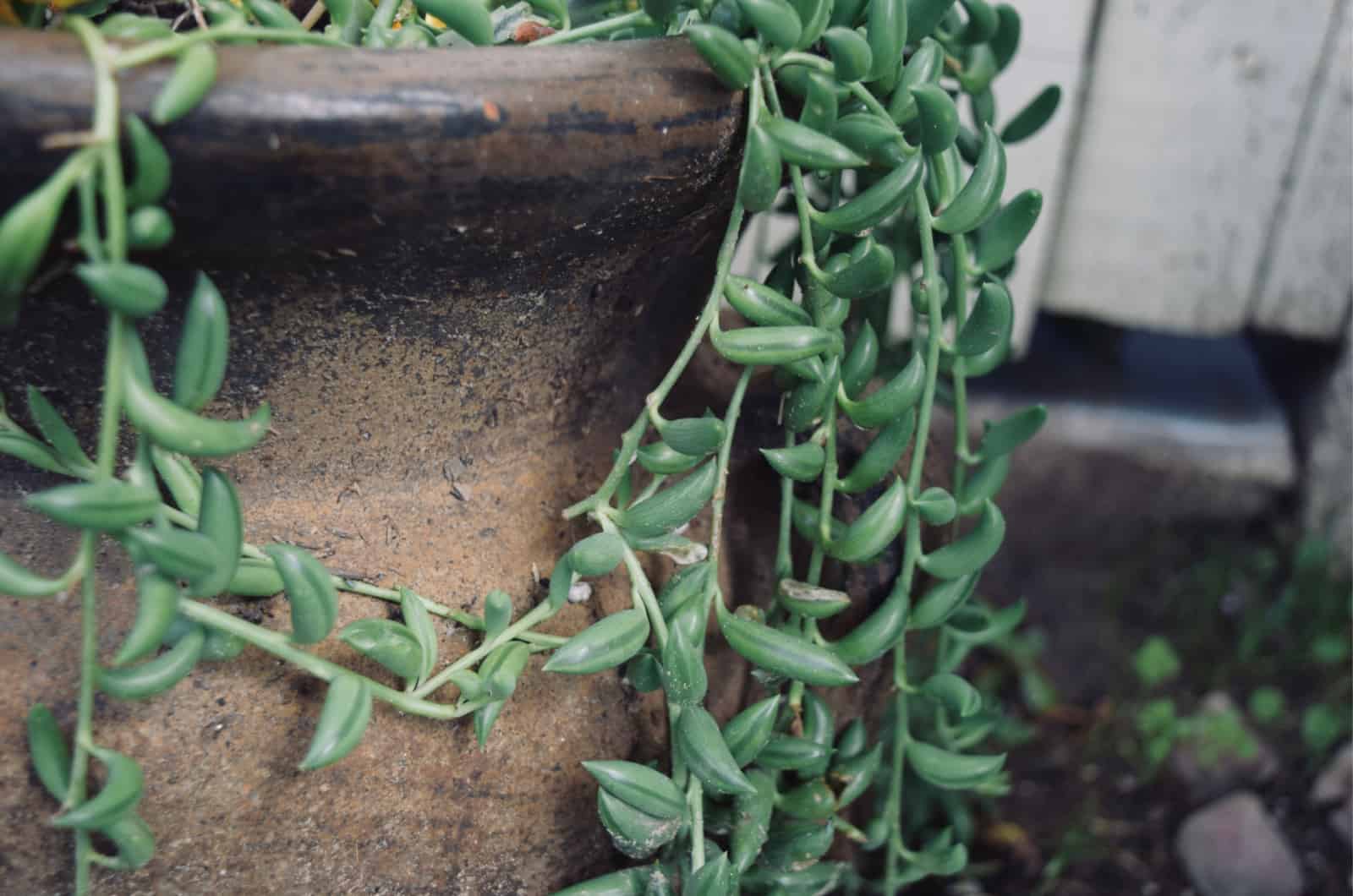I’m sure you’ve heard of the string of pearls and string of hearts, but have you ever heard of the string of bananas?
It may not have as pretty a name as the other two, but it’s definitely more interesting!
If you grow a string of pearls, I’m sure you realize that it may be tricky to care for. But growing string of bananas won’t cause you any trouble, and it’s probably the most low-maintenance plant ever!
In this article, I’ll tell you more about the plant’s features and care guide, and I’ll also show you how to propagate it. Finally, I’ll tell you about certain issues that may occur, as well as some easy ways to fix them.
Before we move on, here’s some basic info about the lovely string of bananas:
[table id=464 /]
Let’s get started!
What Is The String Of Bananas?
Senecio radicans, aka string of bananas, is a popular houseplant that comes from the Asteraceae family. Just like its cousins, string of pearls and string of hearts, it belongs to the Senecio genus.
What makes this plant special are the banana-shaped leaves, hence the name. The string of bananas’ leaves are glossy and develop from elongated tendrils.
This unique plant is mostly grown as a houseplant and can reach about 36 inches in length. This makes the string of bananas a perfect candidate for hanging baskets.
You can even train this Senecio pole to climb by attaching it to a moss pole. It also makes an excellent outdoor plant, but only for growers in warmer climates.
This succulent produces pinkish to white flowers, but is mainly grown for its unique leaves.
If you are planning to make a succulent terrarium, consider adding a string of bananas to it. Other succulents, such as echeverias, sedums, aloes, crassulas, or string of dolphins, combine great with this plant.
How To Care For A String Of Bananas Plant
This succulent is probably the easiest plant to maintain ever, but there is one more benefit; it’s a fast-growing plant.
Provide your string of bananas with enough light, dry air, warm temperatures, and well-draining soil. Give it water only when the soil drains out entirely, and it will be happy and healthy for a long time.
Let’s get into details!
Light Requirements
When grown as a houseplant, the Senecio radicans plant requires a lot of bright light, but it needs to be indirect.
When it comes to the light requirements of this succulent, it is essential to avoid direct sunlight. It would be best if you could expose it to direct morning sun and then keep it away from intense sun rays in the afternoon.
Six hours of bright indirect light will fulfill the needs of this hanging succulent plant. If you can’t provide this amount of light daily, I recommend using grow lights.
On the other hand, if you have issues with direct sun, sheer curtains will filter the light to help your string of bananas thrive.
If the leaves of this Curio plant start to become broader and lose their banana shape, check the light level because direct sun mainly causes this issue.
Additionally, this succulent becomes leggy if it receives too much direct light, and it loses its original beauty.
Temperature & Humidity
This succulent grows in warm weather and dry air in its natural environment. If you grow it as an indoor plant, you’ll need to try mimicking such conditions.
This basically means that typical temperature and humidity are good enough for this plant.
However, not everything suits this intriguing plant; cold drafts and temperature fluctuations are its biggest enemies, so keeping it away from heating and cooling devices is essential.
Soil Requirements
You need to know one thing; succulents don’t thrive in soggy soil! Most indoor plants despise overly wet soil, but a string of pearls will die faster.
The ideal soil for this plant should be well-draining, porous, and fertile. There are many excellent ready soil mixes for cacti and succulents on the market, and you can also make one yourself.
You just need to blend 2 parts potting soil, 1 part pumice, and 1 part perlite. With this combination, you’ll ensure enough nutrients and also protect your string of bananas from overwatering and root rot.
Watering Schedule
The Senecio radicans is a drought-tolerant plant, which makes it a perfect indoor plant for beginners. This means it won’t need much watering, and you can skip one or two waterings and still have a thriving plant.
Its drought tolerance is an excellent feature, especially for forgetful growers. Still, there’s one teeny tiny problem, these plants are susceptible to overwatering!
I’m sure many growers wouldn’t call this a minor problem, but to avoid it you just need to let the soil dry out entirely between waterings, and that’s pretty much it.
Although this plant may display unhealthy changes if underwatered, it will very likely die if overwatered: so, which one do you prefer? I thought so.
During the hot summer months, your string of bananas will lose water faster, so you need to water it more frequently.
During the colder months, cut back on watering, but don’t forget to check if the soil is dry before you water.
Fertilizing Schedule
No ‘string plants’ need additional food to thrive, though feeding them won’t kill them – but rather boost their growth.
There’s no need to use chemical fertilizers; organic ones will suffice.
Here’s a list of organic fertilizers that will help promote this banana-like plant’s growth (none of the fertilizers should include bananas!).
1. Fish emulsion
2. Liquid kelp
3. Worm compost
If you decide to feed this gorgeous Senecio plant, do it only during the growing season; it won’t need any food during dormancy.
Potting & Repotting
Another great thing about this succulent is that you don’t need to repot it often. It won’t mind being root-bound for longer periods, and it benefits from new nutrients every couple of years (I wish all my plants were like this).
I always repot my string of bananas in early spring; in that way, I give it enough time to recover during the growing season.
The only thing to pay attention to when repotting is not to damage the sensitive stems. It’s easy to take it out of its pot and put it in the new one.
When purchasing a new pot, don’t choose one that’s too large; 1 to 2 inches larger in diameter will work just fine. Also, don’t forget to check if the pot has drainage holes, which will aid drainage and allow excess water to come out.
How To Propagate The String Of Bananas Succulent
It seems like the list of great things about this plant never ends. The next is its ease of propagation.
The best way to propagate this plant is through stem cuttings. You won’t spend too much time on propagation, and your chances of getting a new plant are high.
To get a new string of bananas, you can choose between the soil and water propagation methods.
Let’s first see how to root the cuttings of this succulent in soil.
Stem Cuttings In Soil
If you decide to root the cutting in soil, you need to prepare a sharp knife, sterilizing solution, a nursery pot with drainage holes, and potting mix.
First, inspect your plant and check its overall health; remember, the plant needs to be healthy for the propagation to succeed.
Here’s the procedure:
1. Sterilize your knife (use bleach or rubbing alcohol) and choose a healthy string of bananas vine with a few leaves and nodes attached. Make a clean incision; using a sharp knife is the best way to avoid breaking the vine (and plant).
2. Fill a small pot with well-draining soil (cactus or succulent mix) and insert the cutting, making sure one of the nodes is below the soil line, and all the leaves are above.
3. Gently press down the soil surrounding the Senecio radicans cutting to keep it upright.
4. Put the nursery pot in a well-lit spot with warm temperatures. Once new growth appears, you can transfer the rooted cutting to a new pot.
Stem Cuttings In Water
Rooting your string of bananas cutting in water is another easy way to get a new plant. Instead of placing the cutting directly in the soil, you leave the cutting in a glass/jar of water until new roots develop.
This method is excellent for beginners; first, it’s easy; second, you can see what’s going on in the transparent glass/jar; and third, you will enjoy the process more.
Take the cutting just like you would for soil propagation. Pour distilled water into the glass/jar, and put a string of bananas’ cutting in it.
Change the water every two to three days to avoid rotting; if you notice any browning of the water, take the cutting out immediately. This is a common sign of rotting, and the chances of getting new plants significantly decreases in this case.
Once new growth appears, put the cutting in a succulent or cacti mix and continue with adequate care.
Common Problems With The Senecio Radicans
After reading all of the above, you can conclude that this succulent won’t face many issues. However, it may be affected by pests and diseases, just like other houseplants.
Luckily, that’s pretty rare, and if you react on time there’s nothing to worry about.
Let’s find out more!
Pests
Aphids, mealybugs, and spider mites love indoor plants, and the string of bananas isn’t an exception. Pests occur more frequently if you move your succulent from outdoors to indoors without close inspection.
There are various methods for eliminating these creatures, such as rubbing neem oil or rubbing alcohol on the leaves, or spraying the plant with an insecticidal soap solution.
Root Rot
If you grow a string of fishhooks or a string of pearls plant, you may have noticed their susceptibility to root rot disease. This is a common issue with indoor plants, and most commonly occurs if you overwater the plant.
Yellowing, browning, soft leaves, and mushy soil are signs of root rot; cutting off the diseased roots, spraying fungicide, and repotting your plant are the best solutions.
The String Of Bananas Gets Leggy
Direct sunlight is the most common cause of legginess in a string of bananas.
You’ll need to transfer your plant to a well-lit spot, but it shouldn’t be exposed to direct sun.
If some leaves are yellow or sunburned, you can prune them with sterilized pruners.
FAQs
Is the string of bananas toxic?
The Senecio radicans (Curio radicans), or string of bananas plant, is toxic. Calcium oxalate crystals cause toxicity; if your pets ingest the leaves, the crystals will activate and your pets will then show signs of poisoning, such as drooling, mouth pawing, and loss of appetite. You should keep this succulent out of reach.
Is the string of bananas rare?
The string of bananas is a rare Senecio (Curio) plant. If you come across one, don’t miss the chance to purchase it, and don’t forget to propagate it.
What are some benefits of the string of bananas?
One of the biggest benefits of the string of bananas succulent is that it is easy to maintain, making it an excellent plant for beginners.
Additionally, this succulent plant is a fast grower and will reach its full potential quickly, even with a little neglect.
Is the string of bananas a type of plant?
Many people think the string of bananas is related to bananas. Although this is a plant, it has nothing to do with bananas. It’s a succulent plant from the Senecio (Curio) genus and is mainly grown for ornamental purposes.
Wrapping Up
If you are a fan of uncommonly-shaped plants, a string of bananas is the perfect plant for you. It’s super easy to maintain. Even if you don’t have much experience cultivating houseplants, you most likely won’t kill it.
Plant care sometimes gets challenging, but growing a string of bananas will be the best thing you’ve ever tried (just don’t let your dog or cat near the plant).
Until next time!

